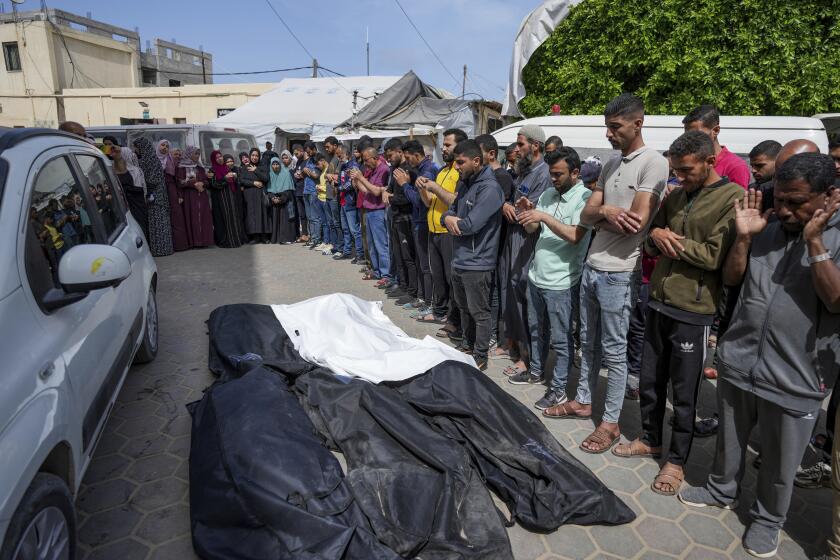Storm victims’ hunger grows
The threat of starvation was added Tuesday to the list of miseries afflicting coastal regions as rescue workers reached some of the most remote communities hit by Cyclone Sidr, the worst storm to strike this poor South Asian nation in more than a decade.
“The survivors are very hungry,” said Sujit Kumar Phal, a surgeon in the Borguna coastal district. “Many of them may die from starvation and from diseases if adequate food cannot be supplied.” He said some desperate survivors were eating spoiled food, adding to the health risks.The official death toll climbed above 3,500, but the Bangladesh Red Crescent Society said it expected the number of fatalities to exceed 10,000.
With 150-mph winds and thrashing rain, Cyclone Sidr struck Bangladesh on Thursday, causing a 16-foot tidal surge along the Bay of Bengal. In a low-lying nation of 150 million that has seen more than its share of natural disasters, the storm was the worst since 1991, when a cyclone and storm surge killed about 140,000 people.
The government, struggling to cope with the relief effort, requested help from other countries.
“At this time we will welcome support from the international community,” a statement issued by the Foreign Ministry said. “We are doing as best as we can do ourselves.”
In a televised speech, the country’s interim leader, Fa- khruddin Ahmed, described the cyclone as “a national calamity” and urged citizens to help the affected people.
Officials said rescue teams drawn from the army, navy, air force and civilian aid organizations managed to reach some of the most isolated coastal villages, where they retrieved bodies and distributed supplies, including food, clothing, water and medicine.
“The situation is still bad,” said army Brig. Gen. Kazi Abidus Samad, who is heading the relief operation. “We don’t know how long it may take to complete the rescue operation or to call it off. But our rescuers are struggling hard.”
Local aid officials and residents described horrific conditions, with acute shortages of drinkable water and outbreaks of disease, including pneumonia, diarrhea and typhoid. Medical officials said the situation could get worse because water supplies are contaminated, in some cases because of decomposing bodies.
“There will be a serious outbreak of diseases which may go beyond control if measures are not immediately taken,” said Sujit, the surgeon. “We need more medicines, including tablets for decontaminating the pond water, immediately.”
Jakir Hossain Miraj, who lives in the hard-hit Borguna district, said at least 900 people in his area had died, and many others were missing. “The coastal belts here turned into a valley of death,” he said.
In many areas, bodies were being buried in mass graves.
“We have no other alternative, as regularly bodies are recovered from canals, rivers and paddy fields,” said Shahed Ali, deputy chief of the Borguna district.
The government said international aid totaling about $120 million has been promised, but relief supplies such as tents, rice and water have been slow to reach most survivors because of the rigors of travel in the region.
“The problem is that aid workers need hours to reach these remote areas. Poor communications are also hampering our work,” said Anwarul Huq, a spokesman for the Bangladesh Rural Advancement Committee, the country’s largest nonprofit development organization.
Times wire services were used in compiling this report.
More to Read
Start your day right
Sign up for Essential California for news, features and recommendations from the L.A. Times and beyond in your inbox six days a week.
You may occasionally receive promotional content from the Los Angeles Times.





